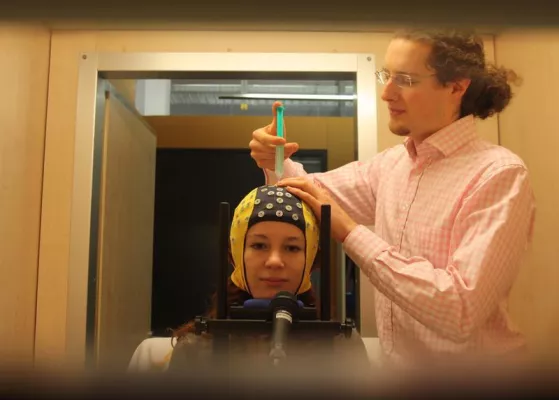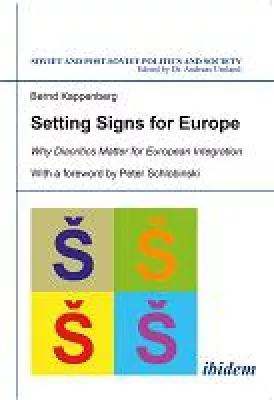(openPR) Trends in big data are exposed when groups of data items or sets are visualized. In August, scientists from around the world met at Schloss Dagstuhl, the Leibniz Center for Informatics, to discuss and propose solutions for the most pressing challenges in visualizing large data sets.
---
"Humans think in categories. Therefore, set visualizations are cognitively appropriate representations to help better understand the world."
– Sara Irina Fabrikant, Professor of Geography, University of Zurich, Switzerland
School children learn basic mathematical concepts using simple set visualizations like Venn diagrams. These work well for 2 or 3 sets. However, new and more powerful techniques are required to handle big data. For instance, depicting Facebook friends, likes and posts as intersecting shapes can help people to understand social networks, but the dataset is large and dynamic.
"Set visual analytics over time, space and other dynamic data is the future."
– Silvia Miksch, Professor of Visual Analytics, TU Vienna, Austria
The assembled scientists from 12 countries and 4 continents tackled challenging research questions that will improve the state-of-the-art in set visualization. Talks from leading experts provided an overview of the field from different perspectives including: algorithms, user studies and artificial intelligence. The presenters were from universities, research institutes and tech companies like Yahoo and Facebook. These talks were drivers for fruitful discussions on how to meet the demands of large and complex real-world data.
Silvia Miksch (TU Vienna, Austria) overviewed the large number of recent developments in set visualization methods. Martin Krzywinski (Genome Sciences Centre, Canada), who co-authors a monthly column for the Nature Methods magazine, discussed challenges in understanding biological data, and his personal approach to visualization. Sara Fabrikant (University of Zurich) examined how set visualization is used in Geographic Information Systems. Stephen Kobourov (University of Arizona, USA) investigated the use of virtual maps (see Figures by Yifan Hu), where sets are represented as “countries”, and showed that such a familiar metaphor creates more intuitive and memorable visualizations. John Howse (University of Brighton, UK) discussed the theoretical side of set visualization and how such diagrams can help humans understand mathematical reasoning.
During the week, a number of interdisciplinary working groups explored specific set visualization challenges in detail. For example, one working group focused on the analysis of set systems that evolve over time and how to best show that progression in interactive visual displays. A second group started developing a new software tool to visualize sets automatically using an idea similar to the Venn diagrams known from primary school. This will be much more accurate than current methods and will be applicable to a bigger volume of data. A third group looked at representing sets of items (e.g. movies) as a metro map where each metro line is a category (e.g., a genre of movies). A fourth group devised novel methods to visualize the human genome to help geneticists identify alterations in the genome due to life-threatening illnesses. The fifth group explored methods to overlay set data on maps (for example the Figure by Wouter Meulemans) by easily distinguishable shapes.
The Dagstuhl-Seminar was organized by:
• Yifan Hu (Yahoo! Research – New York, US)
• Luana Micallef (Aalto University, FI)
• Martin Nöllenburg (TU Wien, AT)
• Peter Rodgers (University of Kent – Canterbury, GB)
More information about the Dagstuhl Seminar 17332 – "Scalable Set Visualizations" can be found at .
Background:
During the whole year, Schloss Dagstuhl invites scientists from all over the world to come to northern Saarland in the south west of Germany to debate the newest scientific findings in informatics. More than 3,500 computer scientists from universities, research institutions and industry take part in various scientific events at Dagstuhl each year. Since 2005, Schloss Dagstuhl is a member of the Leibniz Association, which connects 91 leading non-university research institutes and scientific infrastructure facilities all over Germany. Because of their national importance, the federal government and the state governments jointly fund the institutes of the Leibniz Association.
For questions, please contact:
Michael Gerke
Phone: +49 681 302 4392
Email:
We kindly request a specimen copy in the event of publication. Thank you!
The included pictures may be used free of charge for the purpose of publishing articles based on this press release, if the author of the respective picture is named. All other rights are reserved by the respective authors of the pictures. A version of the pictures with higher resolution can be downloaded from the press release webpage at
.
Weitere Informationen:
- http://www.dagstuhl.de/17332 Information about the Dagstuhl Seminar 17332 – "Scalable Set Visualizations"
- http://www.dagstuhl.de/no_cache/en/about-dagstuhl/news/detail/meldung/664/ Press release and links for downloading the pictures
Quelle: idw










